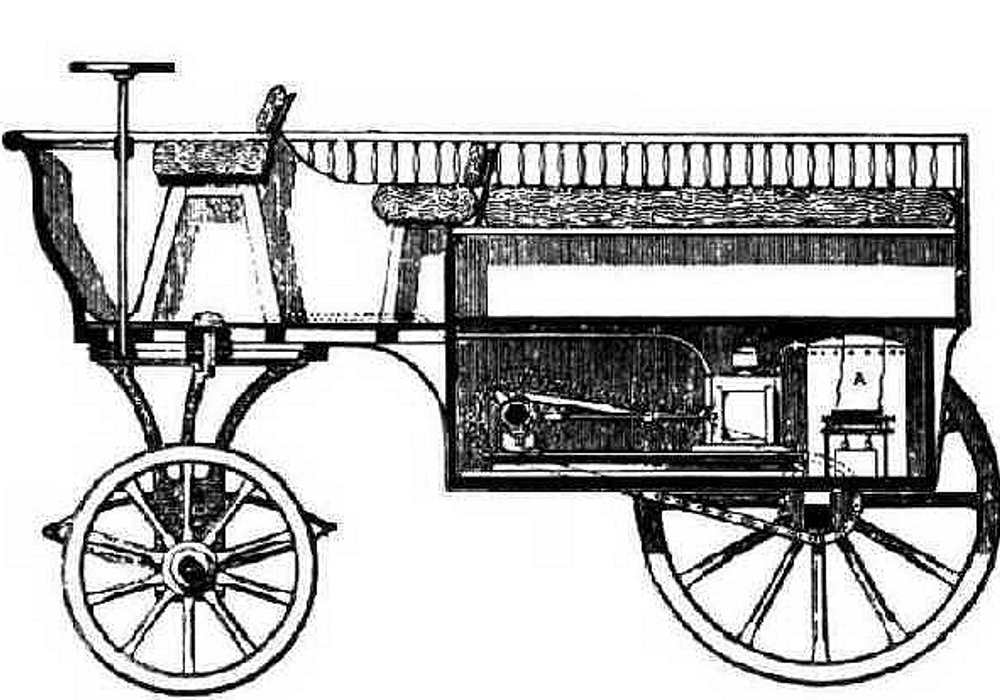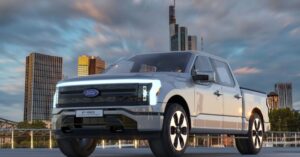
Instead of putting the cart before the horse, the development of the internal combustion engine put the horses inside the cart.
Until recently, almost every vehicle we’ve had on the roads around the entire world has been powered by an internal combustion engine. This engine does exactly what the name suggests. Small, controlled explosions occur inside each chamber. The energy from these explosions allows the pistons to turn the crankshaft and then the wheels. This amazing invention is still part of most vehicles we drive, but do you know where it came from and how long ago it was created?
Aren’t Steam Locomotives Driven By This Type of Engine?
If you think the steam engines for ships and trains from the early 1800s are part of this invention conversation, they are not. These vehicles used external combustion engines. The difference between these two types of engines is where the fuel is combusted. Steam locomotives used burning coal to create steam for the energy to move the train. In the cars and trucks we drive, the fuel is combusted inside each cylinder, which makes it an internal process that is more compact and controlled than what was offered in steam engines.
1860 Was an Important Year, But Things Happened Long Before
Most history books will tell you the first commercially successful internal combustion engine was developed in 1860 by Etienne Lenoir. While true, there were other attempts that worked well prior to this date, giving us some early versions of an engine that could operate the cart without a horse in front.
Early Engines Used Odd Fuel Mixtures
Around 1810, two French engineers built an engine fueled by moss, coal dust, and resin that had controlled explosions. This engine was granted a patent by Napoleon Bonaparte. This opened the door to invention and development by other engineers and scientists. The next engine that came along was a hydrogen-oxygen-powered model that used an electric spark as the ignition. This engine was installed in a carriage and became the world’s first automobile powered by this type of engine.
Continued Development to the Gas Vacuum Engine
In 1823 Samuel Brown patented the first version of the internal combustion engine that could be used industrially. This engine was known as the Gas Vacuum Engine, which uses atmospheric pressure to work. The engine was successfully demonstrated on a carriage and on a boat. The engine was used in 1930 to pump water to the upper level of the Croydon Canal in England, forever changing the way water could be sent upward against the will of gravity.
Several other inventors came up with various engines that could be used in different ways. Eventually, the first engine with in-cylinder compression was developed by William Barnett in 1838. This became the precursor to the engines we’ve used for more than 100 years.
Which Fuel Was Right and How Many Cylinders?
Part of the success of Etienne Lenoir’s engine is the functionality and application of the machine. It was regarded as the first gas-fired internal combustion engine. This engine was functional because it was used in various locations in Paris as the machine that operated printing presses and looms.
The Hippomobile
Eventually, Lenoir installed the engine in a vehicle and drove it. This occurred in 1863, and the vehicle was donned the Hippomobile. He was able to drive nine kilometers from Paris to Joinville-le-Pont and back. He fuel used was a turpentine derivative. This made the Hippomobile the first vehicle to use liquid-fueled internal combustion to drive. The Hipppomobile was only a two-stroke engine that generated 100 rpm and averaged 6 km/h. This vehicle served as the inspiration for others to develop small, useful engines.
Along Comes he Four-Stroke Engine
One of the engineers impressed with the reduced size, and weight of Lenoir’s engine was Nicolaus August Otto, a German Engineer. He took on the project of making this engine more efficient by exploring ways to use Ethyl Alcohol as the fuel and installing four cylinders to improve efficiency.
In 1872, Otto was successful, and his four-stroke engine not only became more efficient but used the principles of intake, compression, combustion, and exhaust, which are the same four principles used in every single internal combustion engine used in every vehicle.
The Race Was On for More Engine Development
Today the names Maybach and Daimler have different meanings in the automotive world, but these names belonged to two German engineers that helped develop better engines in the 1880s. Gottlieb Daimler and Wilhelm Maybach were once associates of Otto and worked to develop engines that were small, fast, and capable of powering vehicles on land and water.
The first successful development occurred in 1883 when the pair created a gasoline engine with hot-tube ignition that could generate one horsepower at 650 rpm. This engine was small and light, which made it good for vehicles. This team worked to improve this engine which would eventually be used by the predecessors of motorcycles, and they were called Retiwagen.
The First Self-Propelled Vehicle
The pair of engineers created the first completely self-propelled vehicle called the Grandfather Clock in 1889. This vehicle produced 1.5 horsepower, and it was a four-wheeled carriage. It didn’t take long for Daimler and Maybach to increase the power of their automobile engine, which made 35 horsepower by 1900 and offered a top speed of 90 km/h.
And the Rest is History
The four principles of the internal combustion engine have been used throughout the entire automotive market since the early days. Eventually, larger engines were created for trucks and heavy-duty commercial vehicles, as well as smaller models for motorcycles. Everywhere you look, you see these engines. The engine powering your gas lawnmower is one of these models, and every car, truck, or van uses this same type of engine.
The development and invention of the internal combustion engine have certainly been one of the most significant creations in human history. It will forever have its mark on the transportation world. Although we’re moving toward electric motors and away from ICE models, there will always be a place for these gas-powered machines.
This post may contain affiliate links. Meaning a commission is given should you decide to make a purchase through these links, at no cost to you. All products shown are researched and tested to give an accurate review for you.








